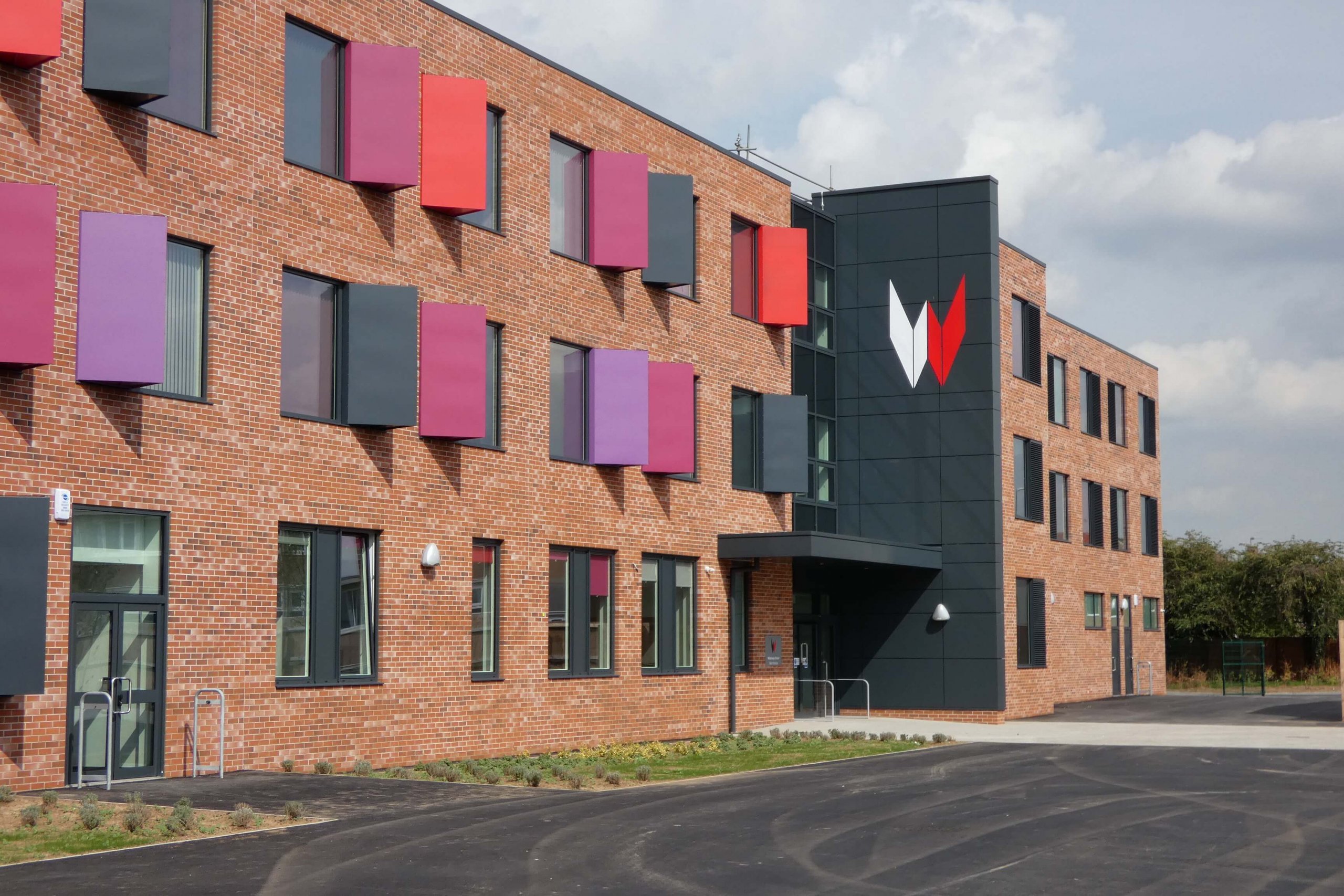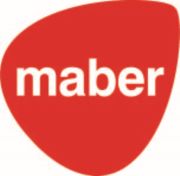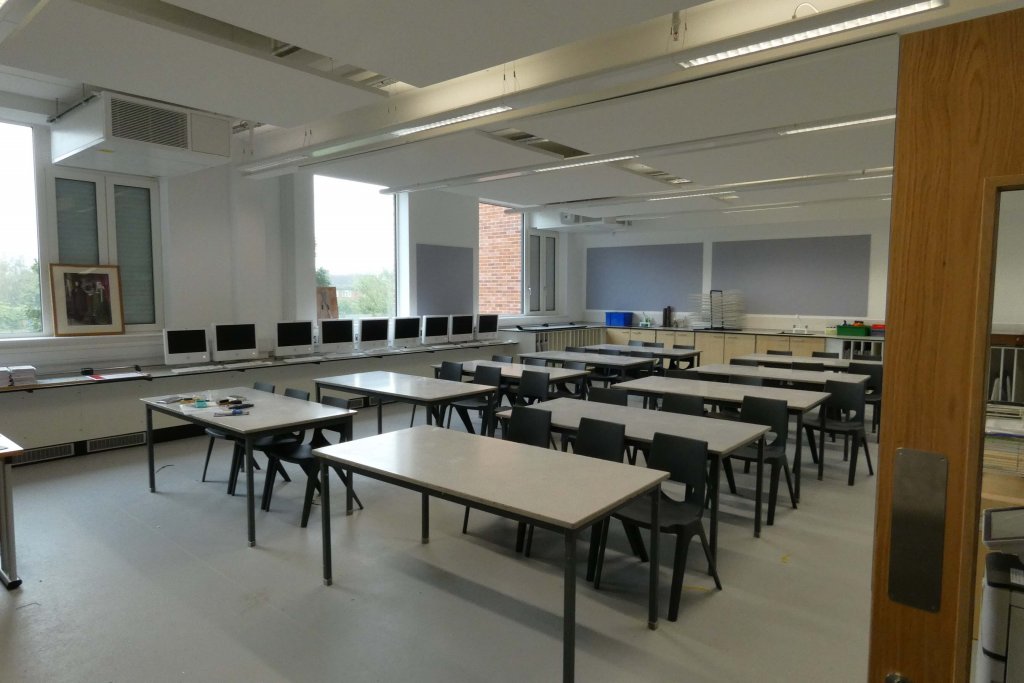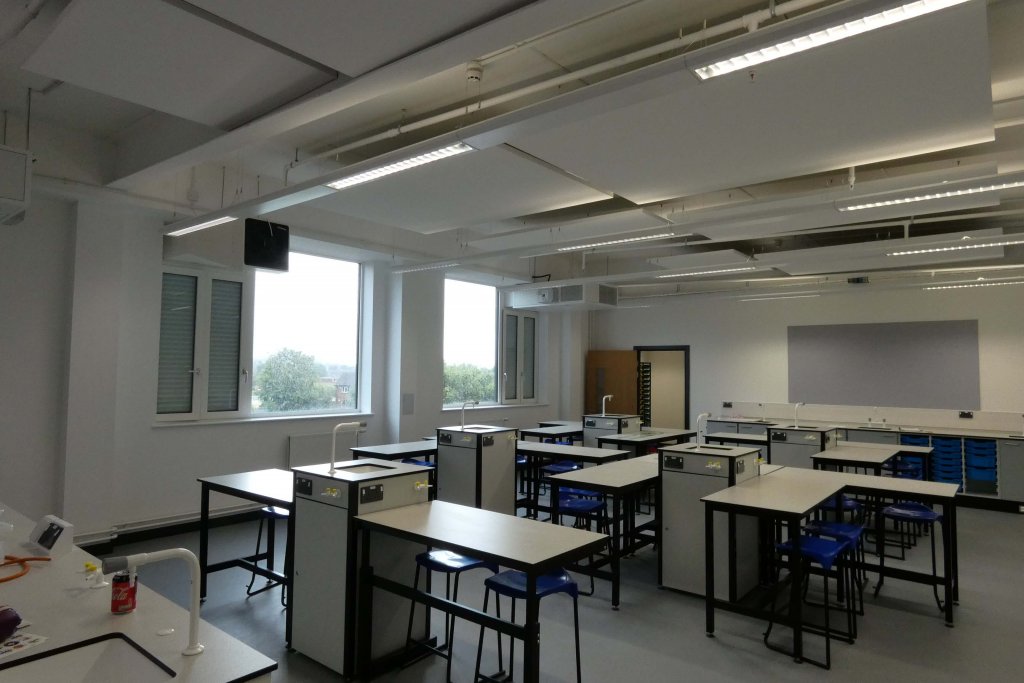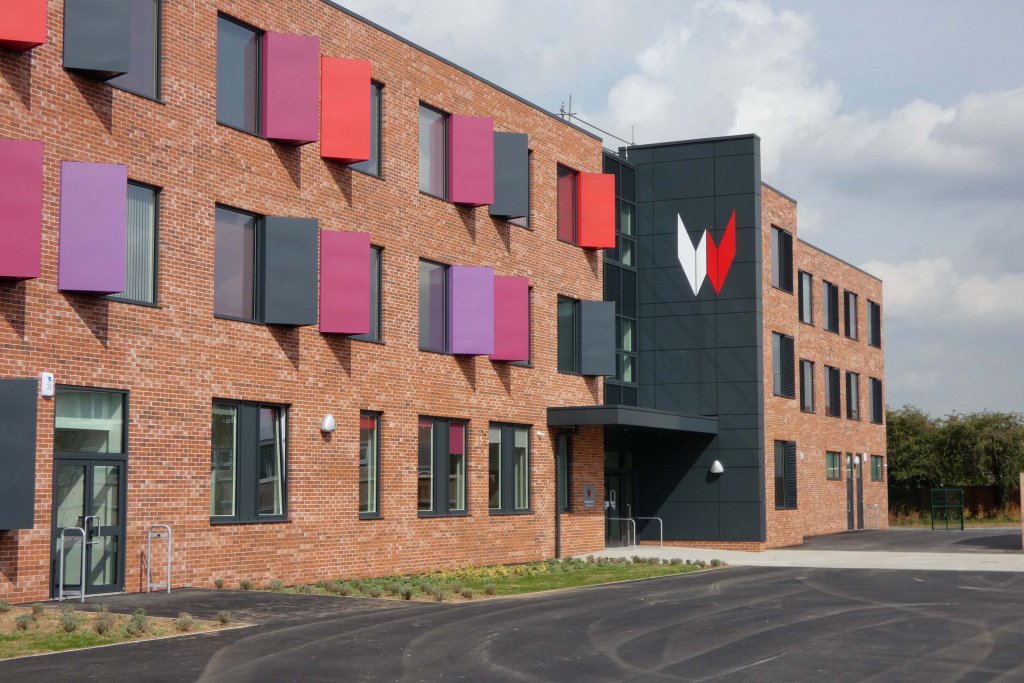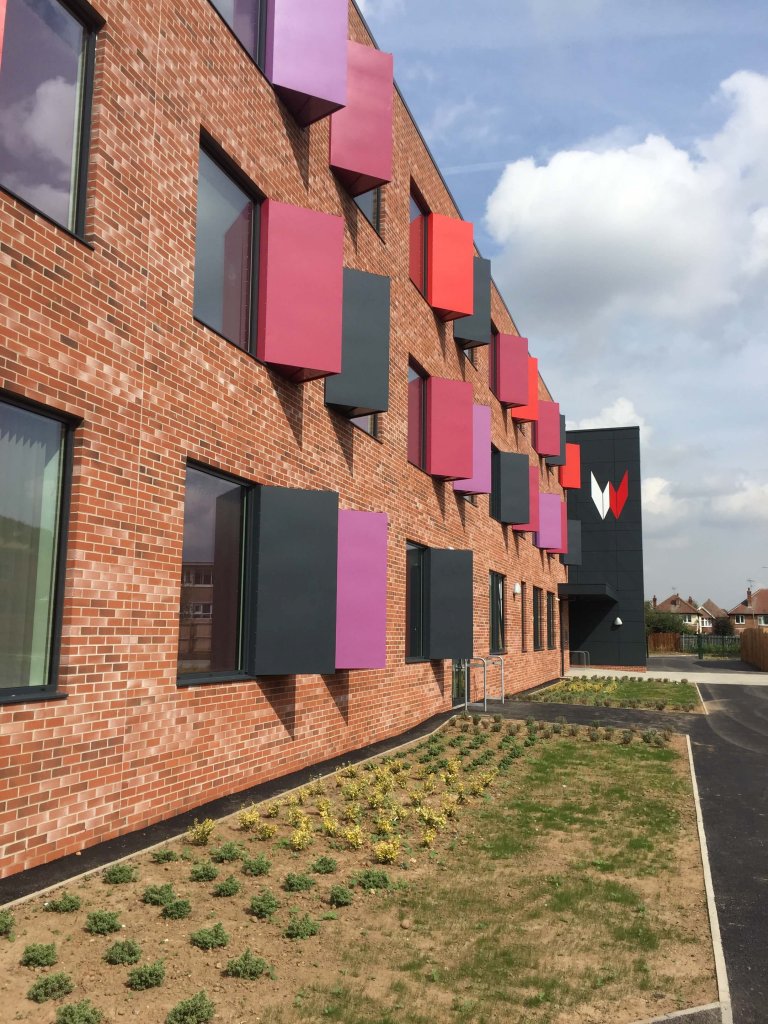The existing secondary school of around 1,000 pupils had developed over the years in a cluster of 1960/70s buildings typical of their time. With an ageing building stock, the school was allocated funding to bring its built environment in line with the quality of teaching provided.
Situated on a challenging construction site which is shared with the local junior and infant school, the new build replaces multiple out-of-date buildings across the campus and creates a single efficient ‘super block’.
BIM Level 2
mandated
As a centrally procured public scheme, BIM Level 2 was mandated for the project. maber was appointed as architect and lead designer, working with the client, the Education & Skills Funding Agency (ESFA), Kier Construction and multiple specialist consultant teams.
Wilsthorpe School was chosen as the sample school for a batch of 10 schools allocated funding across the Midlands. maber worked with Kier throughout the tender, planning and construction process. As a result of the successful bid, Kier won the contract for the wider batch of schools and Wilsthorpe was the first school to be built.
Rapid design
and repeatable elements
With such a tight construction window between school years, the team undertook a six-week client engagement programme, with just half a day per week spent with the client during that time. This high intensity design process delivered a full design for the school within just six weeks.
Lee Smith, associate director at maber takes up the story
Archicad helped us hugely with the rapid design process. On day one, we had nothing but the schedule of accommodation in Excel. Within 10 days, we’d turned that into a collection of zones you could read as a floor plan.”
Having previously worked on three different batches of ESFA priority school programmes, maber was able to draw on lessons learnt on previous projects. The schools follow a similar specification; classrooms must meet certain size, light and ventilation requirements. maber had a tried and tested method for standard floor and wall constructions which helped to speed up the process
Using Archicad to replicate technical details throughout the design process, especially floor, wall, roof, doors and window details, meant a much more efficient process. Wherever possible, composites, favourites and complex profiles were used to standardise construction elements such as walls and parapet details. When large design changes were requested the 3D model could be quickly amended and drawings updated.
The school was constructed from steel frame and pre-cast concrete decks and by creating a design early, the steel work was ready for manufacture while the team were waiting for the planning permission decision.
“We had complete confidence that the BIM model was buildable from the moment we got planning permission. This was critical in ensuring the school could be completed on time. As soon as we got planning, we were able start manufacturing the steel immediately,” says Lee.
Collaboration
From the very first week, maber was able to share information with the structural engineers via IFC, providing a collection of zones for them to work the steel frame around.
maber shared IFCs directly with other disciplines too, including the steel manufacturer, fire engineer, furniture designer and mechanical and electrical engineer. Clash detection was carried out by Kier and maber using Solibri.
The team used Graphisoft’s BIMCloud and Teamwork, which aided collaboration between designers and allowed multiple architects to work on the design at the same time. With this approach, model files could be accessed and revised ‘live’ on site with contractors.
Viewpoint was used for the common data environment (CDE) and the team was able to publish and issue models and drawings to the CDE from any location due to it being a Cloud platform.
Future-proof
asset management
Asset management was an important factor for the future smooth running of the school, and a key requirement of BIM Level 2. COBie classification was identified through the BIM Execution Plan (BEP) as the standard to which all consultants would classify their elements.
Archicad zones were given the correct COBie and Uniclass classifications through the use of the property and classification management tools. Solibri model checker was used internally to validate elements of the architectural model before it was federated with the wider design team. Key clashes were identified at an early stage to avoid on-site delays.
Creating a flexible and
engaging learning environment
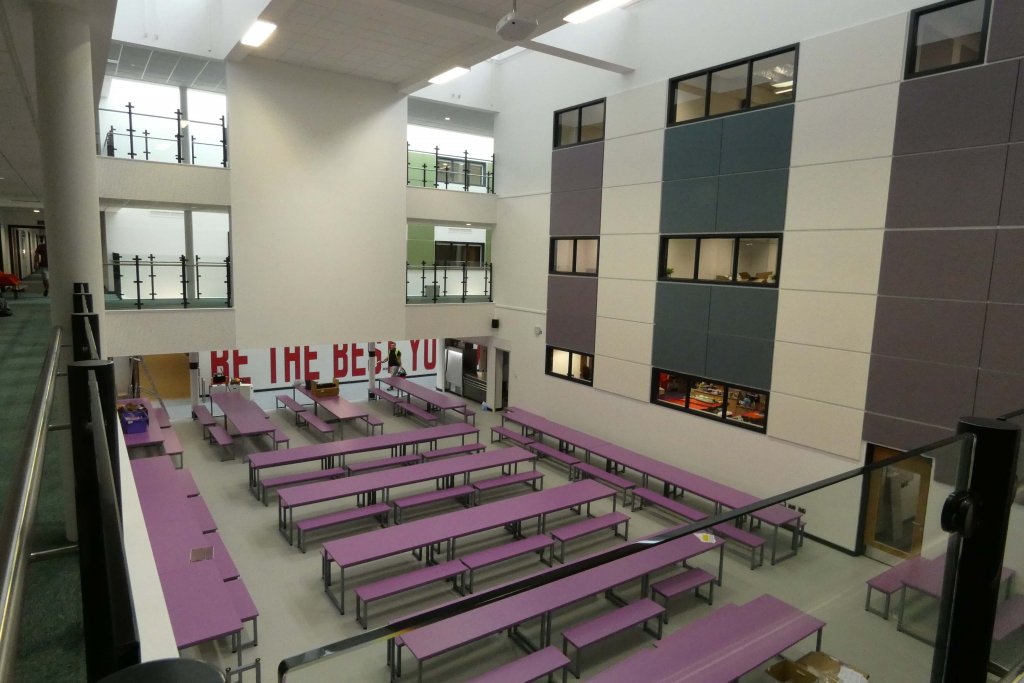
The design ethos was to provide a robust, sustainable and engaging learning environment for the current and future pupils of the school. Flexible spaces were tailored to suit the school’s individual needs and included a triple-height glazed entrance atrium; the main hall and drama studio, which are connected via a five-metre high moveable wall to form the stage area; and motorised retractable bleacher seating to allow for flexible assembly, dining and performance modes.
Careful
acoustic planning
A particular challenge was the impact of environmental noise entering classrooms from the nearby M1 motorway. The passive ventilation strategy required a large amount of natural ventilation to the facades and mixed mode ventilation units in each classroom. Acoustic cowls were custom designed with an acoustician to ‘deflect’ the incoming noise but to allow for effective ventilation. The cowls have become a key design feature of the principal facade.
“Acoustics are a very important consideration when designing schools,” says Lee. “The government is keen to make its buildings more energy efficient and mechanical electrical ventilation is one way to do this. However, designers have to be careful with acoustics to ensure that pupils can’t hear the classroom next door.”
Visualisation and
sun path analysis
From conception through to completion, the visualisation tools within Archicad were used to communicate the proposed design to a large number of stakeholders including Kier, ESFA, Wilsthorpe School and the local planning department.
Archicad’s sun path analysis tool, C4D rendering engine and the BIMx project presentation app enabled productive engagement meetings with the client and helped to speed up decision making.
A major concern during the project was how overshadowing would affect a neighbouring school. Confidence from Archicad’s sun shading analysis meant the issue could be promptly assessed with the project programme unaffected.
Within four weeks maber had completed 90% of the developed design and was able to print a full colour, large scale 3D model. Time spent producing the 3D building model to the level of detail required in the BIM Execution Plan (BEP) meant that visualisations were easily produced.
We used Graphisoft’s BIMx visualisation tool early on. With the help of an Xbox controller linked to a MacBook, BIMx helped the client to visualise the atrium space. It meant we were able to answer the client’s questions quickly and easily. In addition, once the design was finalised, pupils were able to see what their new school would look like using BIMx and Google cardboard.
A rapid construction phase
using offsite manufacture
A tight construction programme of 14 months on site from July 2017 to completion in September 2018 was only possible due to the agile and responsive nature of the construction process and companies involved.
As the infant and junior schools are on the same site, the construction timetable was carefully planned around the school summer holidays with visualisations produced to describe the process to key stakeholders. All heavily disruptive work such as diverting electrical, gas and water routes was completed while there were no pupils on site.
The steel frame and prefabricated concrete slabs were constructed offsite, brought in by lorry and craned into place. The school was completed on time and opened to pupils for the start of the school year in September 2018.
About maber
Established in 1983, maber is an award-winning practice with offices in Nottingham, Derby, Leicester, London and Birmingham.
maber’s portfolio crosses all industry sectors and includes new build, refurbishment, and conversion projects. It has an established reputation for delivering successful commercial solutions on challenging urban brownfield and historically sensitive sites.
About Graphisoft
Graphisoft® ignited the BIM revolution in 1984 with Archicad®, the industry first BIM software for architects. Graphisoft continues to lead the industry with innovative solutions such as its revolutionary BIMcloud®, the world’s first real-time BIM collaboration environment; and BIMx®, the world’s leading mobile app for lightweight access to BIM for non-professionals. Graphisoft is part of the Nemetschek Group.
